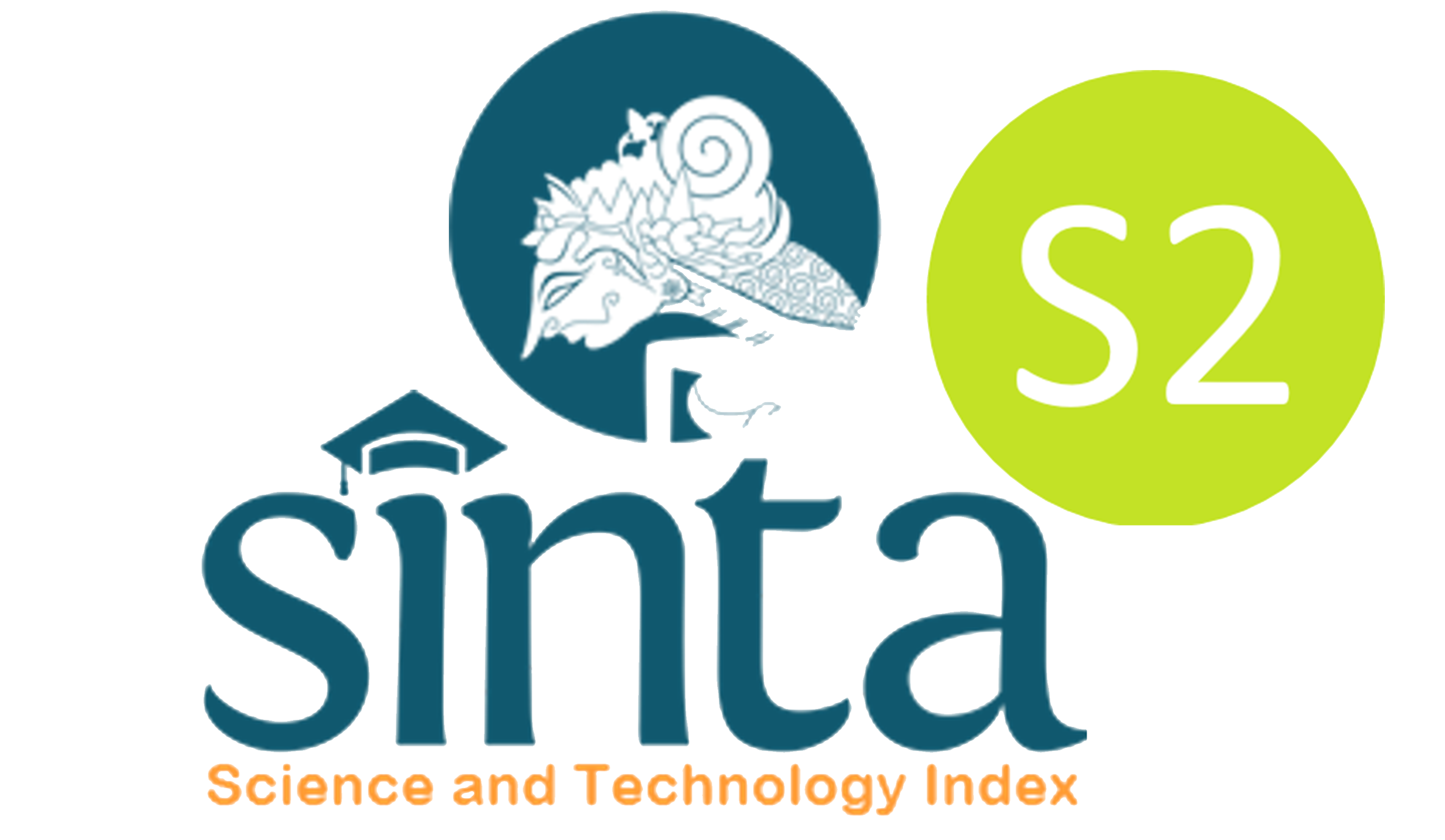Assessing the Influence of Mobility Behavior on the Covid-19 Transmission: A Case in the Most Affected City of Indonesia
Najirah Umar(1); Hamdan Gani(2*); Sitti Zuhriyah(3); Helmy Gani(4); Feng Zhipeng(5);
(1) STMIK Handayani
(2) STMIK Handayani
(3) STMIK Handayani
(4) Sekolah Tinggi Ilmu Kesehatan Makassar
(5) Hangzhou Normal University
(*) Corresponding Author
AbstractAn emerging outbreak of Covid-19 has now been detected across the globe. Given this pandemic condition, the robust estimation reports are urgently needed. Therefore, this study aims to analyze the impacts of community mobility (before, during, and after the lockdown period) on the spread of the Covid-19 in Jakarta, Indonesia. The secondary data was derived from surveillance data for Covid-19 daily cases from the Health Office of DKI Jakarta Province and the Ministry of Health. The community mobility indicators were retrieved from the Google website. Our results showed that in the pre-lockdown period, the Covid-19 daily cases rapidly increased, while community mobility significantly dropped. The increasing number of Covid-19 daily cases was significantly affected by the number of Covid-19 tests per day rather than community mobility. During the restriction period, the number of Covid-19 tests per day, and community mobility statistically affected the decreasing number of Covid-19 daily cases. Meanwhile, after the lockdown period, the number of Covid-19 daily cases rapidly increased, which significantly has a direct relationship with the increasing level of community mobility. Overall, community mobility and the number of tests per day are the essential variables that explain the number of Covid-19 daily cases in Jakarta, Indonesia. Additionally, this study did not observe any impact of average air temperature and air pollution on the spread of Covid-19. This study figures out that community mobility could potentially explain the progression of Covid-19.
KeywordsCovid-19; Community Mobility; average air temperature; air pollution; Indonesia
|
Full Text:PDF |
Article MetricsAbstract view: 305 timesPDF view: 77 times |
Digital Object Identifier https://doi.org/10.33096/ilkom.v14i1.1043.17-24 https://doi.org/10.33096/ilkom.v14i1.1043.17-24
|
Cite |
References
M. A. Shereen, S. Khan, A. Kazmi, N. Bashir, and R. Siddique, COVID-19 infection: Origin, transmission, and characteristics of human coronaviruses, Journal of Advanced Research, vol. 24, pp. 9198, 2020, doi: 10.1016/j.jare.2020.03.005.
Y. Chen, Q. Liu, and D. Guo, Emerging coronaviruses: Genome structure, replication, and pathogenesis, Journal of Medical Virology, vol. 92, no. 4, pp. 418423, Apr. 2020, doi: 10.1002/jmv.25681.
C. C. Lai, T. P. Shih, W. C. Ko, H. J. Tang, and P. R. Hsueh, Severe acute respiratory syndrome coronavirus 2 (SARS-CoV-2) and coronavirus disease-2019 (COVID-19): The epidemic and the challenges, International Journal of Antimicrobial Agents, vol. 55, no. 3, p. 105924, 2020, doi: 10.1016/j.ijantimicag.2020.105924.
WHO, Coronavirus disease 2019 (COVID-19) situation report 41. Retrieved from., 2020. https://www.who.int/docs/default-source/coronaviruse/situation-reports/%0A20200301-sitrep-41-covid-19.pdf?sfvrsn=6768306d_2. (accessed Jul. 14, 2020).
WHO, WHO Clinical management of severe acute respiratory infection (SARI) when COVID-19 disease is suspected. Retrieved from., World Health Organization, 2020.
B. E. Young et al., Epidemiologic Features and Clinical Course of Patients Infected with SARS-CoV-2 in Singapore, JAMA - Journal of the American Medical Association, vol. 323, no. 15, pp. 14881494, 2020, doi: 10.1001/jama.2020.3204.
J. Riou and C. L. Althaus, Pattern of early human-to-human transmission of Wuhan 2019 novel coronavirus (2019-nCoV), December 2019 to January 2020, Eurosurveillance, vol. 25, no. 4, p. 2000058, 2020, doi: 10.2807/1560-7917.ES.2020.25.4.2000058.
Z. Wu and J. M. McGoogan, Characteristics of and Important Lessons from the Coronavirus Disease 2019 (COVID-19) Outbreak in China: Summary of a Report of 72314 Cases from the Chinese Center for Disease Control and Prevention, JAMA - Journal of the American Medical Association, vol. 323, no. 13, pp. 12391242, 2020, doi: 10.1001/jama.2020.2648.
A. Wilder-Smith and D. O. Freedman, Isolation, quarantine, social distancing and community containment: Pivotal role for old-style public health measures in the novel coronavirus (2019-nCoV) outbreak, Journal of Travel Medicine, vol. 27, no. 2, p. taaa020, 2020, doi: 10.1093/jtm/taaa020.
J. Rocklv and H. Sjdin, High population densities catalyse the spread of COVID-19, Journal of travel medicine, vol. 27, no. 3, p. taaa038, 2020, doi: 10.1093/jtm/taaa038.
S. K. Pani, N. H. Lin, and S. RavindraBabu, Association of COVID-19 pandemic with meteorological parameters over Singapore, Science of the Total Environment, vol. 740, p. 140112, 2020, doi: 10.1016/j.scitotenv.2020.140112.
Y. Zhu, J. Xie, F. Huang, and L. Cao, Association between short-term exposure to air pollution and COVID-19 infection: Evidence from China, Science of the Total Environment, vol. 727, p. 138704, 2020, doi: 10.1016/j.scitotenv.2020.138704.
World Population Review, World Cities, 2020. https://worldpopulationreview.com/world-cities (accessed Jul. 14, 2020).
Data.jakarta.go.id, Data Penduduk DKI Jakarta, 2020. https://data.jakarta.go.id/organization/dinas-kependudukan-dan-catatan-sipil (accessed Jun. 17, 2020).
Jakarta.go.id, Jakarta Infografis, 2020. https://jakarta.go.id/infografis (accessed Jul. 14, 2020).
CNN Indonesia, Jokowi Umumkan Dua WNI Positif Corona di Indonesia CNN Indonesia Senin, 02/03/2020 11:36, CNN Indonesia, 2020. https://m.cnnindonesia.com/nasional/20200302111534-20-479660/jokowi-umumkan-dua-wni-positif-corona-di-indonesia (accessed May 31, 2020).
The Johns Hopkins Coronavirus Resource Center (CRC), Mortality in the most affected countries, 2020. https://coronavirus.jhu.edu/data/mortality (accessed Jul. 14, 2020).
Kemkes, https://covid-monitoring.kemkes.go.id/, 2020. https://covid-monitoring.kemkes.go.id/ (accessed May 31, 2020).
The Jakarta Post, Transitional PSBB a deciding chapter for jakartas new normal, 2020. https://www.thejakartapost.com/news/2020/06/09/transitional-psbb-a-deciding-chapter-for-jakartas-new-normal.html (accessed Jul. 14, 2020).
The Jakarta Post, Jakarta extends transition phase postponing further relaxation by 14 days, 2020. https://www.thejakartapost.com/news/2020/07/01/jakarta-extends-transition-phase-postponing-further-relaxation-by-14-days.html (accessed Jul. 14, 2020).
DKI Jakarta Province, Corona Jakarta, 2020. https://corona.jakarta.go.id/ and https://kawalcovid19.id/ (accessed Jul. 14, 2020).
The World Air Quality Index Project, AQICN, 2020. https://aqicn.org/data-platform/covid19/ (accessed Jul. 14, 2020).
Google, Google Community Mobility, 2020. https://www.google.com/covid19/mobility/ (accessed Jun. 14, 2020).
IQAIR, World most polluted cities, 2020. https://www.iqair.com/world-most-polluted-cities (accessed Jul. 14, 2020).
R. M. Sakia, The Box?Cox transformation technique: a review, Journal of the Royal Statistical Society: Series D (The Statistician), vol. 41, no. 2, pp. 169178, 1992.
The Jakarta Globe, Indonesia rules out lockdowns as covid19 new cases growth slows down, 2020. https://jakartaglobe.id/news/indonesia-rules-out-lockdowns-as-covid19-new-cases-growth-slows-down (accessed Jul. 14, 2020).
The Jakarta Globe, Jokowi calls for massive covid19 rapid testing in indonesia, 2020. https://jakartaglobe.id/news/jokowi-calls-for-massive-covid19-rapid-testing-in-indonesia-as-market-rupiah-are-routed (accessed Jul. 14, 2020).
Tempo, Covid 19 task force head psbb in jakarta is not effective yet, 2020. https://en.tempo.co/read/1333550/covid-19-task-force-head-psbb-in-jakarta-is-not-effective-yet (accessed Jun. 17, 2020).
Kompas, Residents still ignoring psbb, 2020. https://kompas.id/baca/english/2020/04/16/residents-still-ignoring-psbb/ (accessed Jun. 17, 2020).
The Jakarta Post, Ministry allows 11000 companies operate during psbb, 2020. https://www.thejakartapost.com/news/2020/04/22/no-choice-but-to-keep-economy-running-ministry-allows-11000-companies-operate-during-psbb.html (accessed Jun. 17, 2020).
A. Carten, L. Di Francesco, and M. Martino, How mobility habits influenced the spread of the COVID-19 pandemic: Results from the Italian case study, Science of the Total Environment, vol. 741, p. 140489, 2020, doi: 10.1016/j.scitotenv.2020.140489.
M. Jahangiri, M. Jahangiri, and M. Najafgholipour, The sensitivity and specificity analyses of ambient temperature and population size on the transmission rate of the novel coronavirus (COVID-19) in different provinces of Iran, Science of The Total Environment, p. 138872, 2020.
S. Copiello and C. Grillenzoni, The spread of 2019-nCoV in China was primarily driven by population density. Comment on Association between short-term exposure to air pollution and COVID-19 infection: Evidence from China by Zhu et al., Science of The Total Environment, vol. 744, no. 3, p. 141028, Nov. 2020, doi: 10.1016/j.scitotenv.2020.141028.
J. D. Berman and K. Ebisu, Changes in U.S. air pollution during the COVID-19 pandemic, Science of the Total Environment, vol. 739, p. 139864, 2020, doi: 10.1016/j.scitotenv.2020.139864.
R. Tosepu et al., Correlation between weather and Covid-19 pandemic in Jakarta, Indonesia, Science of the Total Environment, vol. 725, p. 138436, 2020, doi: 10.1016/j.scitotenv.2020.138436.
Refbacks
- There are currently no refbacks.
Copyright (c) 2022 Hamdan Gani, Najirah Umar, Sitti Zuhriyah, Helmy Gani, Feng Zhipeng

This work is licensed under a Creative Commons Attribution-ShareAlike 4.0 International License.










